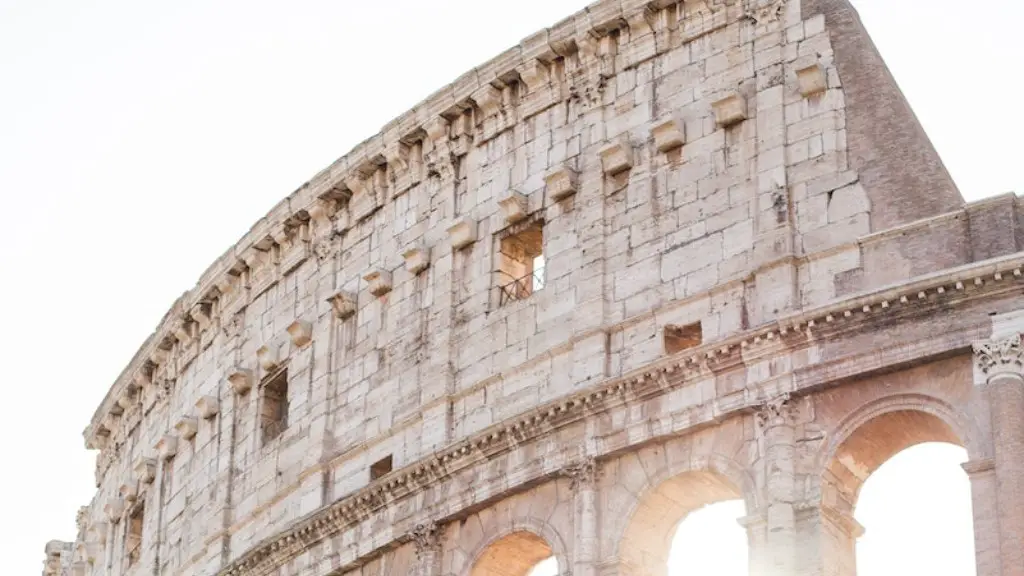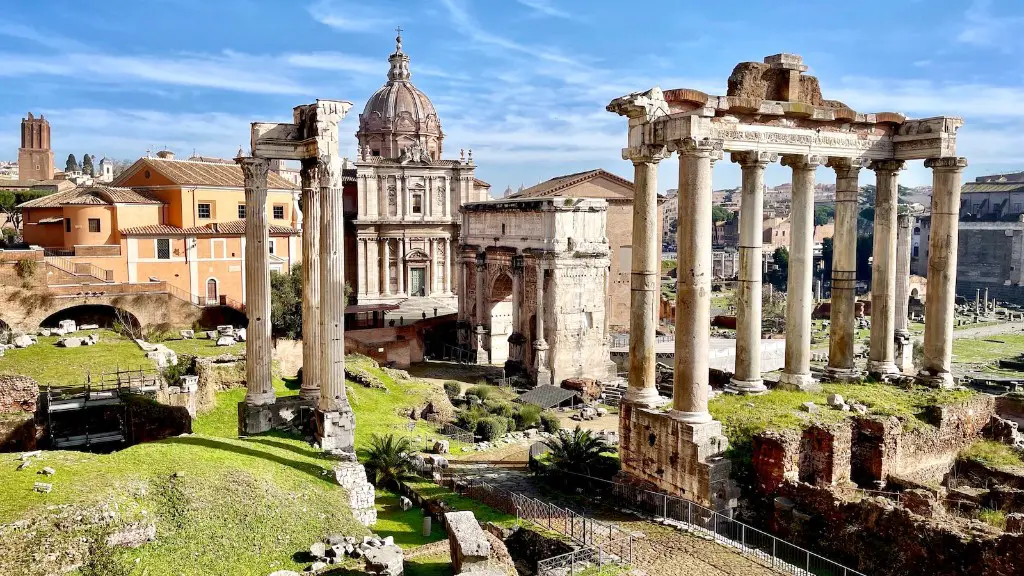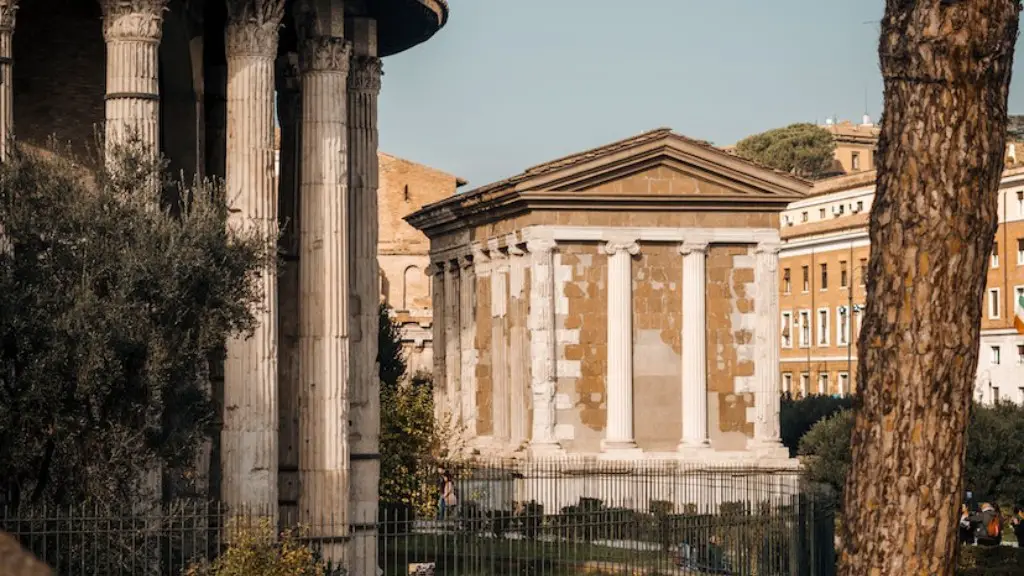Origins Of Ancient Rome
Ancient Rome has a long and complex history that began more than 3000 years ago. It is thought to have been founded by the Italic tribes of the Latins, alongside other Italic peoples, such as the Sabines, in the 8th century BCE. The original city was founded near the Tiber River in what is now known as the Lazio region of Italy. It is believed by many historians that Rome’s founders were of Etruscan origin and that the language spoken was an Italic dialect.
From its foundation, Ancient Rome quickly became a powerful centre of culture, commerce and industry, and its influence soon spread far beyond the Italian peninsula. Rome developed rich trading relationships within the Mediterranean, and eventually rose to become the first superpower in the world. Over the centuries, Rome gained control of much of the Mediterranean, western Europe and parts of northern Africa. The city also became renowned for its rich and vibrant culture, art, literature and architecture.
The Roman Empire
The city of Rome was at the centre of the Roman Republic, which eventually morphed into the Roman Empire, the largest and most powerful empire of its time. In the centuries that followed its formation, the Roman Empire expanded rapidly, as its borders extended from the Atlantic Ocean to the Euphrates in modern-day Iraq. The Roman Empire encompassed over 6.5 million square kilometres- an area more than double the size of the British Empire at its peak.
The Roman Empire was a significant political and military superpower, and it developed an expansive trade network, which contributed to its economic and religious strength. The Pax Romana, the period of peace in the vast Roman Empire, enabled the Romans to focus their attention on culture, architecture and engineering. During this period of stability, Roman achievements in literature and art saw the height of their classical era.
Christianization of Rome
Christianity became the official religion of Rome in the early fourth century, during the reign of Emperor Constantine. This marked a period of religious reforms and would later pave the way for the creation of the Roman Catholic Church. Christianity brought an unprecedented level of uniformity to the empire, as it was slowly adopted by the expanding population.
The Roman Empire achieved social stability from the adoption of Christian values, and this eventually led to a more unified culture. Christianity also brought a more moral lesson than one which had been previously provided, which in turn enabled the Roman Empire to retain its power for centuries, a legacy which endures to this day.
Fall Of The Roman Empire
The Roman Empire eventually declined and fell in 476 CE, a process which was largely caused by a number of factors, including a series of civil wars, economic recession, a breakdown of Roman law, and an increasing number of Barbarian invasions. The fall of the Roman Empire would eventually pave the way for the rise of new states, religions and societies in Europe.
Influence Of Ancient Rome Today
The legacy of Ancient Rome is still felt powerfully today in many areas, from politics and culture to language and architecture. Many of Rome’s principles and ideals, such as citizenship, the rule of law and civil rights, have become integral elements of modern Western societies. Its lasting architectural contributions, of which the Coliseum is perhaps the most iconic example, can still be visited today, with millions of visitors travelling to Rome year after year.
Influence Of Ancient Roman Language
The language of ancient Rome has left a lasting impression on modern European languages. Latin, the language of Ancient Rome, is still used ceremoniously today in parts of Europe, and provides the root of many modern-day words in languages such as English, French, Spanish, and German. To this day, Latin is the official language of the Roman Catholic church, and it is still studied in schools and universities around the world.
Legacy Of Ancient Rome On Education
The legacy of Ancient Rome can also be seen in the educational systems and practices of today. The city’s literacy and education was renowned throughout the ancient world, with Roman schools teaching a variety of subjects, from music and math to rhetoric, astronomy and Latin. Furthermore, much of the scientific knowledge and philosophical insights of antiquity were gathered in the city of Rome and disseminated to subsequent generations.
Relationship To Ancient Greek Culture
The traditions and culture of Ancient Rome were largely derived from their Ancient Greek predecessors. Literary, artistic, and scientific works from Ancient Greece were admired and studied by Roman scholars, and they often incorporated aspects of Greek culture into their own. In architecture and sculpture, Greek styles and motifs were adapted and adapted in inventive ways, creating some of the best known buildings and sculptures of the ancient world.
Political And Military Impact
For many centuries, Ancient Rome was one of the most powerful states in the world, influencing the fate of Europe and the Mediterranean basin. Its armies were legendary and its military prowess enabled the Roman Empire to expand far beyond its borders and maintain control of a vast expanse of territory. Additionally, the political and legal systems of Rome set the foundations for much of the political and legal structures of our modern societies.
Social Culture Impact
The social culture of Ancient Rome was marked by multiple divisions, with citizens split across social classes. Rome was a highly stratified society, with a hierarchical structure that was determined by wealth, power, and privilege. This social class system included the Roman Senate, which held considerable power in the city, and the Plebeians, the common people.
Religious Impact
The religion of Ancient Rome was polytheistic, with a variety of gods and goddesses believed to inhabit the world. The most important of these gods were Jupiter, Mars, Neptune, and Minerva, who were seen as protectors of the Roman people. Religion was an integral part of Roman life, and Roman gods were portrayed on coins and monuments throughout the city. As mentioned previously, Christianity eventually became the official religion of Rome, and its teachings still influence many aspects of religion today.
Conclusion
Thus, Ancient Rome is perhaps one of the most influential civilisations of the past, and its legacy can still be seen in many areas of the world today. From architectural masterpieces to political and social structures, the civilization of Ancient Rome has left its mark on History, and its impact is still felt in our modern-day societies.



